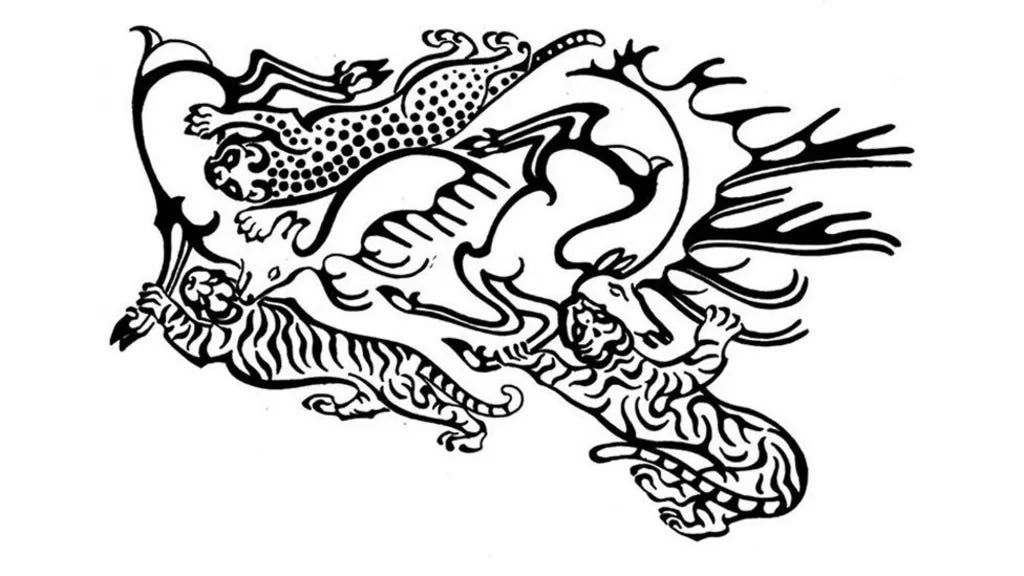Projection Protests: A How-To Guide, Part III
Planning a good operation
Good Evening:



The sunflower army is nearly ready for full bloom. As happens every year, the sunflowers have all turned away from the embassy. Give them a week and they will be ready to march.
In yesterday’s installment of my how-to series on projection operations, we talked about what gear you might consider for different conditions:
This evening, I want to consider the question of the elements of a good projection operation—individually and in combination. These elements are the following:
A sexy target;
A message that gels well with that target;
Gear that will support placing that message on that target;
The ability to project safely;
A means of supplying enough power to run that gear in a reliable fashion; and
A means of publicizing the operation.
All of these elements are critically important. You can get all of them right but one and the operation will still fail. They need to all work.
Good Targets
We’ve talked a bit about target selection already, but here I want to address a few technical elements of the problem. A good target should be recognizable—or at least easily explainable. A building that is instantly recognizable, and on which projecting tells a story, is a dramatically better target than just some random building. The ideal target will also offer a large projection surface with minimal contour and few or no windows. It will also be light colored; the darker a surface is, the more light it will absorb. The more a building says movie screen to you, the better it’s going to work. The closer you can get to it, the better it’s going to work. The less explanation a projection requires, the better it’s going to work. The best targets are simple, big, windowless, white, and self-explanatory.
A Message That Makes Sense Given Your Target
A message can be a simple image. It can be a word or two or three. It can be a slideshow of images. It can be a whole essay. What it can’t be is incongruous given your choice of target. If you were to project a Ukrainian flag on the Supreme Court, nobody would know what you were trying to say. Ditto if you were to project an image of a hanger on the Russian embassy. Because what you’re ultimately producing is an image of a certain message projected on a certain building or structure, the building and the message need to make sense together. Nothing wrecks an operation quite like being unclear in what meaning you are conveying. Think it through from the point of view of the viewer, the passerby in the street, and the viewer of images on social media. All have to understand what you’re doing and why. And they need to understand it fast.
Choose Gear That Will Enable Your Message in the Context of That Target
This is a delicate step. A lot of people are not able to keep a warehouse full of gear options and pull out different items at different times. So think through the sorts of operations you have in mind before you buy gear. In the alternative, get a group of people together to pool gear. A small collective with one powerful projector and a couple of gobo projectors could do a lot together at a reasonable cost per member. I have lent projectors out to people who want to use them and have causes I want to support. Ditto my generators. I also do projections for people whom I want to help. In the first Special Military Operation, I borrowed spotlights and gobos from others. Help each other.
The critical thing is to plan operations your gear will support and to acquire gear that will drive the kind of operations you want to plan. You don’t have to do it all at once.
Consider Safety In Designing Your Operations
This is a particularly important consideration if you’re dealing with lasers, which are dangerous pieces of equipment. Lasers can blind people. They can also cause problems for aircraft. (I will be writing more about this in a future post.) But other kinds of equipment can cause problems too. Projectors, for example, get very hot. All of this equipment is designed for applications other than protests; LaserCube, for example, makes its products for DJs. Using these machines for, uh, off-label uses carries a certain amount of risk of accident. Be careful and take the time to learn how the equipment works before you start playing with it in public. A good rule of thumb is to avoid projecting anything at ground level. Look for targets which you can project up onto. That will help avoid endangering bystanders.
Power
Power failures happen. So be duplicative. Have backup power available always. Most of the time it will means schlepping stuff you don’t end up using. That’s okay. Bring a generator. If you think you don’t need one, bring one anyway. All of these pieces of equipment take juice. Some of them take a lot of it. There is no quicker way to ruin an operation than to find out your battery is dead or that the outlet you were counting on doesn’t work. Or that your 50 foot extension cord has a king in it. You need a backup power plan. Always.
You’re going to ignore this advice. And the first couple of times, you’ll get away with it. And then you won’t. Don’t say I didn’t warn you.
Publicity
It turns out that I wasn’t the first person to put a Ukrainian flag on the Russian embassy. Someone did it before I did. I didn’t know about it until after my own stunt. Neither did anyone else. That’s because my predecessor didn’t think through the publicity side of things. Bad move.
I don’t know whether if a tree falls in the forest and nobody hears it, it really makes a sound. But I know for sure that if you conduct a political protest and nobody knows about, it didn’t happen. I don’t do these operations to send a message to the Russian embassy. I do them to talk to the world about the Russian embassy.
Think through how you are going to publicize an operation. There is just no point in spending the energy, time, and money to put one on just for the benefit of people who happen to walk by. The goal here is to make noise. Part of making noise is making sure people hear you.
Social media is key to this. So is conventional media. If you don’t have a social media following, team up with someone who does. If you don’t have media contacts, team up with people who do. But think through how you’re going to get the message out. It doesn’t have to be some complicated media strategy. But there has to be some predictable manner in which to tell the world what you are doing.
Tomorrow’s dog shirt will not have an installment in this series, as I have a bunch of other stuff on my plate. On Friday, however, I will close it out by reflecting on how to use projection operations in combination with other protest activity.
Yesterday on #DogShirtTV, the estimable Holly Berkley Fletcher, the estimable Alicia Wanless, and I discussed the crime wave sweeping our nation’s capital—corruption, Hatch Act violations, and so on—and how the National Guard is coming to fix it all.
The Situation
In Monday’s “The Situation” column, I agree with President Trump’s claim that there is a crime issue in D.C., but contend that the substance of the District’s crime issue is unrelated to the city’s crime rate, and instead has everything to do with President Trump’s flagrant attacks on the rule of law:
I could go on—and on and on and on—but you get the point. There is a real out-of-control crime situation in Washington, but it is not the one referred to in the president’s executive order. It is the one he is leading.
It is the one whose perpetrators Trump is pardoning and shielding from investigation and prosecution in the first place. It is the one for which his own accountability is blocked by presidential immunity. And it is the one of which he is a leading beneficiary.
Unfortunately, this is not a crime spree that deploying the National Guard or a federal takeover of the D.C. Metropolitan Police Department is going to deter.
Yesterday On Lawfare
Compiled by the estimable Mary Ford
Personal Immunity in National Prosecutions of International Crimes
Chile Eboe-Osuji urge the International Law Commission to remain faithful to its mandate and reject personal immunity for international crimes tried in national courts.
The central question may be: Does a rule of personal immunity for a head of state mean, as a matter of international law, that no other state is free to use its own legal processes to try and stop the head of state of another state who is committing genocide? As it goes for the prevention and punishment of genocide, so too must it for the crime of aggression, crimes against humanity, and war crimes—whether or not explicitly codified in a treaty.
And the resulting question becomes whether it now falls within the progressive mandate of the ILC to conciliate the updated international law since at least the end of World War II with the ideation of sovereign immunity that is often traced to 1812. The ILC may need to consider whether the mandate of a head of state or head of government—which is necessarily not immune to interference by sundry factors including illness, disability, death, and national impeachment—must still remain immune from the legal process of accountability in relation to international crimes, out of the concern that such a legal process might lead to an interference with the political mandate of the accused within his own state.
Does the Posse Comitatus Act Apply at Guantanamo?
Kaitlyn Cieply argues that using the U.S. military to oversee the detention of “high priority” criminal migrants at Guantanamo Bay would violate the Posse Comitatus Act (PCA). Cieply emphasizes that even if Guantanamo is considered extraterritorial, PCA violations at the detention camp would still be actionable; and presents three possible ways to remedy these violations.
It would be patently unlawful to use the military in this way within U.S. borders; it is dangerous to suggest that by removing detainees to a black site in the Caribbean the government is allowed to act with impunity. NSGB is a de facto territory of the U.S. On that basis alone, U.S. laws should apply there. But even supposing this is not true, there is reason to believe that the PCA should be interpreted to apply extraterritorially. In either case, there are remedies available for the migrants who have been, are, or will be detained under these conditions at NSGB.
Podcasts
On Lawfare Daily, Tyler McBrien sits down with Seth Harp to discuss Harp’s new book entitled, “The Fort Bragg Cartel: Drug Trafficking and Murder in the Special Forces,” Harp’s time reporting on the murder of two special forces operators at Fort Bragg, and how widespread PTSD and addiction are across elite U.S. military organizations in the wake of the 9/11 wars.
On Scaling Laws, Anat Lior joins Kevin Frazier to take stock of how agency law can be used to address issues of artificial intelligence (AI) liability and why it’s important to ensure that someone is held accountable when AI systems cause harm.
Today’s #BeastOfTheDay is the leopard, seen here in triplicate in a 2,500 year old tattoo:
High-resolution imaging of tattoos found on a 2,500 year old Siberian "ice mummy" have revealed decorations that a modern tattooist would find challenging to produce, according to researchers.
The intricate tattoos of leopards, a stag, a rooster, and a mythical half-lion and half-eagle creature on the woman's body shed light on an ancient warrior culture.
Archaeologists worked with a tattooist, who reproduces ancient skin decorations on his own body, to understand how exactly they were made.
The tattooed woman, aged about 50, was from the nomadic horse-riding Pazyryk people who lived on the vast steppe between China and Europe…
The team worked with researcher Daniel Riday who reproduces ancient tattoo designs on his body using historical methods.
His insights on the scans led them to conclude that the quality of the work differed between the two arms, suggesting that a different person made the tattoos or that mistakes were made.
"If I was guessing, it was probably four and half hours for the lower half of the right arm, and another five hours for the upper part," he says.
"That's a solid commitment from the person. Imagine sitting on the ground in the steppe where there's wind blowing all that time," he suggests.
"It would need to be performed by a person who knows health and safety, who knows the risks of what happens when the skin is punctured," he adds…
Some of the tattoos appear to have been cut or damaged when the body was prepared for burial.
"It suggests that tattoos were really something for the living with meaning during life, but that they actually didn't really play much of a role in the afterlife," explains Dr Caspari.
In honor of today’s Beast, check out the full paper on this discovery. It contains lots of very cool Beasts well worthy of honor.
Keep reading with a 7-day free trial
Subscribe to Dog Shirt Daily to keep reading this post and get 7 days of free access to the full post archives.







